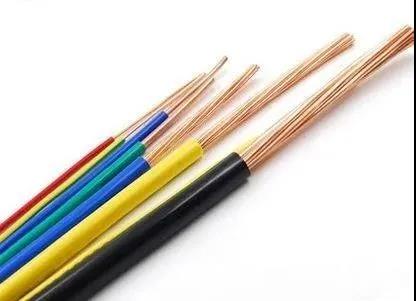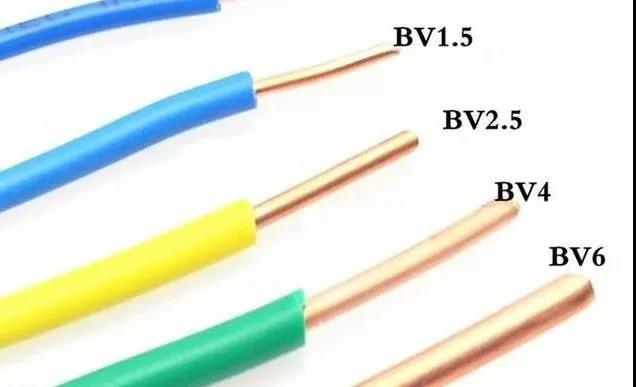The full name of BVV wire is copper core PVC insulated PVC sheathed round sheathed wire, also known as lightweight PVC sheathed cable, commonly known as hard sheathed wire. Copper core (hard) wiring, single core round, double core flat. It is usually used for surface-mounted wires.
The letter B stands for cloth silk, and the letter V stands for polyvinyl chloride in plastics. There are also the copper core symbol, and the hard wire (ordinary single-core conductor) symbol is omitted and will not be displayed.
Structural specifications: The difference between BVV wire and BV wire is that BVV has an extra layer of sheath than BV. It is suitable for cables and wires used in power plants, household appliances, meters, and telecommunication equipment with AC voltage of 300/500V and below. The long-term allowable working temperature of the iron core does not exceed 65 degrees. Its nominal cross section is 0.75-185mm2.
Purpose: BVV wire hard sheathed wire is suitable for cables and wires of power plants, household appliances, instruments and telecommunication equipment with AC voltage of 300/500V and below, and also used for surface-mounted wires.

The difference between BVV wire and BV wire is that BVV wire has an extra layer of sheath than BV wire. It is suitable for cables and wires used in power plants, household appliances, meters, and telecommunication equipment with AC voltage of 450/750V and below. The long-term allowable working temperature of the iron core does not exceed 65 degrees. Its nominal cross-section is divided into 0.75; 1.0; 1.5; 2.5; 4; 6; 10; seven specifications ranging from 0.75-10 square.
It is suitable for wires and cables used in power plants, household appliances, meters and telecommunication equipment with an AC voltage of 450/750V and below.
Installation method of BVV wire:
1. When installing cable terminals, the semiconductor electrical shielding layer must be stripped off, and the insulation must not be damaged during operation. Knife marks should be avoided. If necessary, sand it smoothly with sandpaper; the shielding end should be smooth, and the graphite layer should be smooth (carbon particles) removed.

2. The copper tape shield and steel armor at the end of the plastic insulated cable must be well grounded. This principle should also be followed when short-circuiting, so as to avoid induced electromotive force at the end of the steel armor during the three-phase unbalanced operation, and even “fire”, burnt-out of the sheath and other accidents. The ground lead needs to use our tinned braided copper wire. When connecting with the copper tape of the cable, ferrochrome should be welded. It is not recommended to use a blowtorch to seal and solder, so as not to burn the insulation layer.
3. The three-phase copper tape shield should be connected to the ground wire separately. Note that the shielded ground wire and the steel armored ground wire should be led out separately and insulated from each other. The position of the welding ground wire should be as low as possible.
The basic requirements of the cable end and the middle joint: a. Good conductor connection b. Reliable insulation, it is recommended to use radiation cross-linked heat-shrinkable silicone rubber insulation material. c. Good sealing performance d. Sufficient mechanical strength to adapt to various operating conditions.
The end of the cable must be protected from water and other corrosive substances to prevent the insulation layer from aging and breakdown due to water trees. A crane or forklift must be used for cable loading and unloading. Horizontal transportation and flat laying are prohibited. When installing large cables, the cable car must be used to prevent the cables from being damaged by external forces or being scratched by manual dragging.
If the cable cannot be laid in time for some reason, it should be stored in a dry place to prevent the end of the cable from being exposed to sunlight and water.
